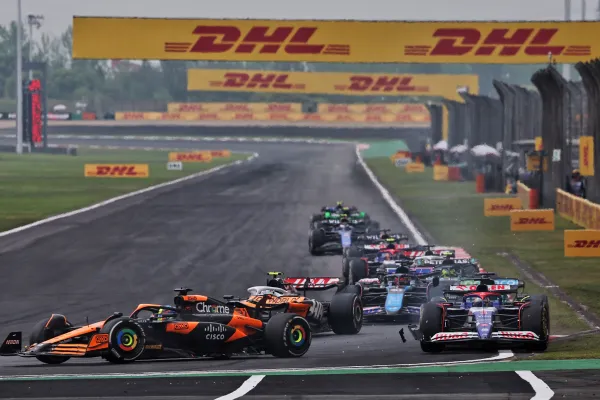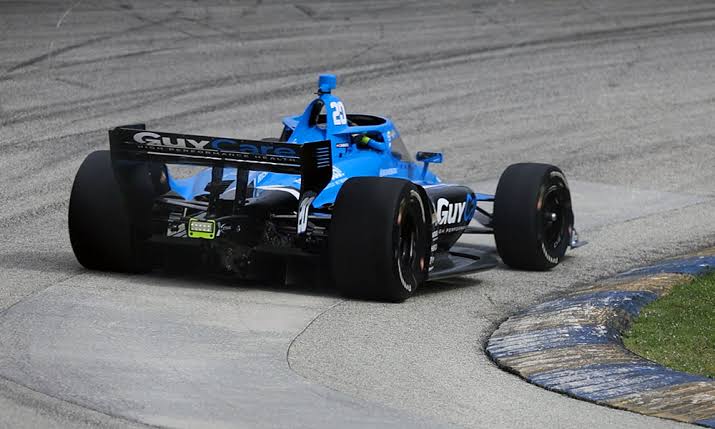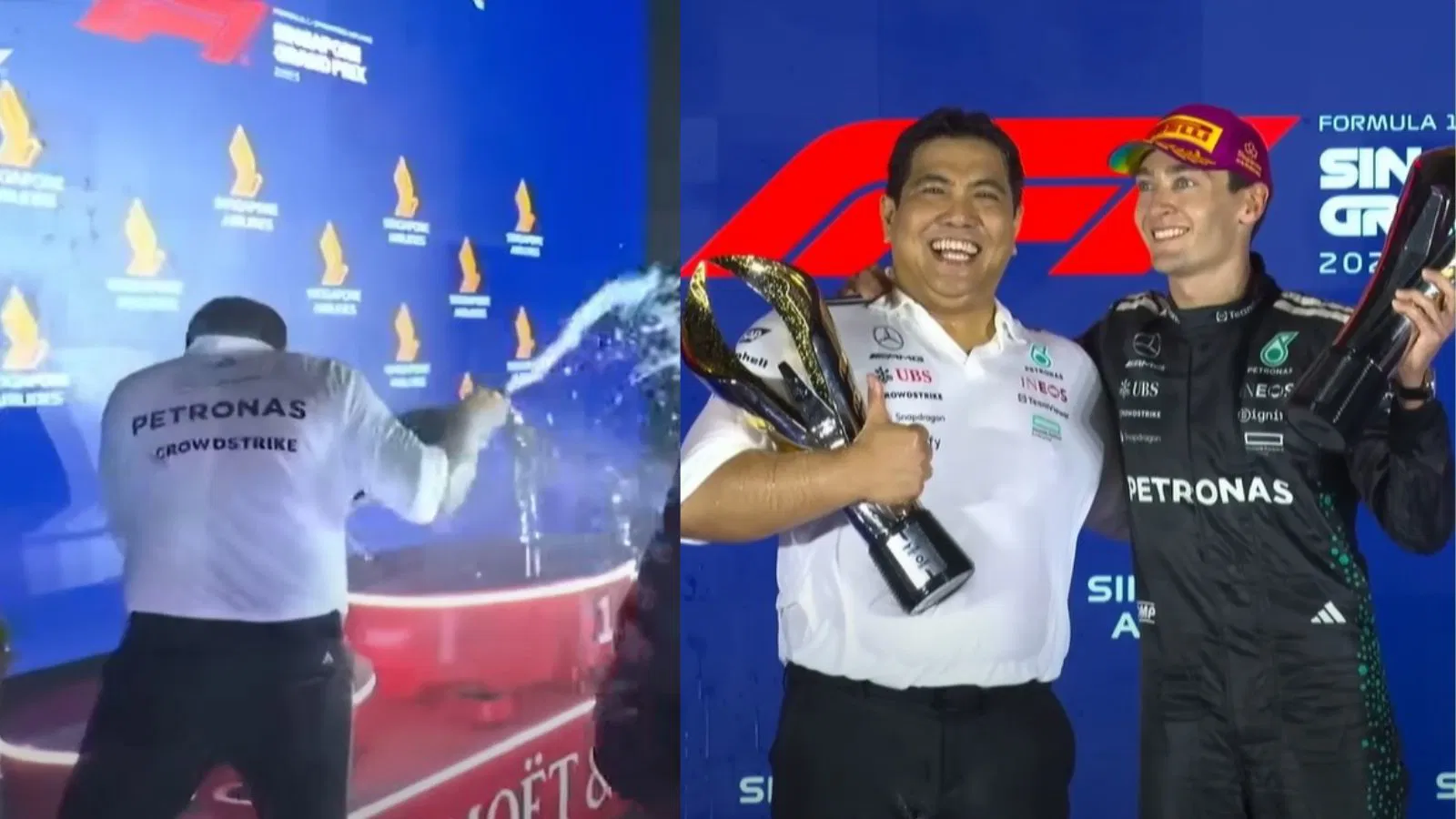McLaren’s High-Stakes Tyre Testing: Pioneering Wet Weather Performance For F1’s Future
Under January’s cold 2025 environment, McLaren participated in a critical exercise for Pirelli, testing future wet weather tires at renowned Circuit Paul Ricard. Two days, with Oscar Piastri and Lando Norris driving, represented a benchmark in constant technological progression for Formula 1. With new campaign preparation in full motion, wet weather tire performance comes increasingly to the fore, with changing weather at events becoming an ever-present feature.
Combat Harsh Environments
The opening day of testing saw immediate complications, with temperatures dropping to a record low of -2°C in certain regions. Initially, these cold temperatures hindered the testing schedule, and Oscar Piastri could not make it through the morning’s scheduled runs. Yet, the McLaren crew showed an impressive level of determination, overcoming the hostile environment and successfully completing their testing schedule in the long run.
Both drivers, not fazed at all by the cold weather, were eager to try out the new tires at their extreme. The crew utilized high-tech computerized tracking technology in closely tracking tire performance, testing traction, wear, and overall behavior in wet conditions.
Technical Specifications for 2026 Wet Weather Tyres
Main Breakthroughs
Retains 18-inch Rim Diameter: The new tires have kept the 18-inch rim diameter, a practice embraced in preceding years, becoming a standard in Formula 1.
Slightly Reduced Width on Front and Rear Axles: This change aims to enhance aerodynamic efficiency and improve handling in wet conditions.
Engineered for 2026 Formula 1 Rule Updates: Engineered in harmony with significant new power unit specifications and car frame redesigns scheduled for 2026,
Performance Metrics
The McLaren drivers fared remarkably well in testing:
Oscar Piastri: Completed 120 laps with a best lap in 1’07″008.
Lando Norris: 123 laps with a best lap in 1’07″956
Distance Travelled: 840 kilometers on a wet track, a new record
Not only do these lap times say a lot about the new tire compounds’ performance, but also about McLaren’s willingness to make its car go at its best in extreme temperatures, too.
Groundbreaking testing approaches
Pirelli utilized sophisticated methodologies in an effort to collect consistent and reliable information in these tests:
Artificial watering: Water tankers have been used in watering sections of track in an attempt to simulate actual wet sections of track.
Dedicated Circuit Sprinkler System: It helped wet the track in a controlled manner, with moisture level settings for desired achievement in specific terms.
Controlled Wet Condition Management: Engineers monitored weather patterns and adjusted testing parameters accordingly to gather comprehensive data across various wet conditions.
Data collection and analysis
The information derived through these tests is worth its weight in gold. Things such as:
Levels of Grip: Knowing how effectively the tires will respond under variable moisture conditions is important for both driving confidence and safety.
Weart Rates: Teams utilize tire degradation under wet conditions in planning pit stops during a race.
Temperature Monitoring: Maintaining temperatures at an ideal level is paramount for performance; engineers focused on when such new tires warm up when driving in cold weather.
Strategic Relevance for 2026 Rules
Mario Isola, Pirelli’s Director of Motorsport, emphasized the test’s significance:
It is not an easy one when testing wet weather tires to replicate consistently under similar track conditions in a quest for reliable information, but over these two days, a lot of information has been gained that will become key when developing new intermediate and extreme wet tires.
Future Testing Schedule
The overall development program at Pirelli involves additional tests at several circuits:
4th and 5th February: Barcelona-Catalunya (dry weather tires with Ferrari and McLaren)
February 12-13: Jerez de la Frontera (Alpine, McLaren, and
The tests not only contribute towards developing wet weather performance but also towards getting all compounds in tune with evolving requirements for competition in Formula 1.
Technical Challenges and Innovations
The 2026 tire development is not a mere tweak. With a lot of work in terms of power unit and chassis legislation, Pirelli will have to develop tires capable of fitting in with the new breed of cars in Formula 1.
Adaptive engineering
The wet weather tire testing at Paul Ricard confirms the fine balancing act between
Consistent Performance: There must be tires that deliver performance consistently under changing conditions.
Technological Innovation: Continuous advancements in materials science are critical for developing high-performance compounds.
Adherence to Regulations: Maintaining new designs in compliance with requirements under FIA and enhancing performance capabilities is a continuous challenge.
Material Science Breakthroughs
The engineers at Pirelli have designed new rubber compounds with added traction at no sacrifice in durability through a tremendous amount of work in
Silica Level: Silica level in rubber compounds can have a significant impact on wet traction performance through an improvement in hydroplaning behavior.
Compound Toughness: There will have to be a delicate balancing act between soft compounds for traction and durability compounds for durability.
The Role of Drivers in Tire Innovation
Both Lando Norris and Oscar Piastri played significant roles in testing times. What both drivers’ feedback provided in terms of information regarding drivers’ experiences with extreme tire performance cannot be overestimated.
Driver feedback loop
Following a run, drivers shared feelings regarding:
Handling Qualities: How sensitive were the tires in corners?
How in tune with the track did they sound?
Confidence Levels: Were they able to push harder knowing they had reliable grip?
Such a feedback loop is important for engineers, who utilize real-time feedback in creating tire designs in real-time in relation to driving experiences.
Environmental factors
As Formula 1 embraces its move towards becoming a sustainable entity, its tire development is not alone in its environmentally friendly orientation.
Recyclable Materials: Recycling post-use can develop tires, minimizing waste immensely.
Green Manufacturing Practices: Greenhouse gas footprint in production processes is in harmony with F1’s quest for sustainability.
The future of F1 tires
The commitment of Pirelli to sustainability reflects a broader motorsport direction towards environmentally responsible practice. As legislation continues to evolve, teams will not only have to adapt their cars but even have to adapt in terms of managing resources.
Conclusion: Defending Frontiers in Motorsport Innovation
The collaboration between McLaren and Pirelli is not a mere test but an integral part of 2026 wet weather tire development in Formula 1. All information gained under such extreme testing will go towards defining wet weather tire performance in 2026.
A new era begins.
For the new season, enthusiasts can hope for thrill-filled races in which driving and car talent will combine with technological innovation. What is discovered in these tests will make them even better prepared for unpredictable weather, a Motorsport constant.
In conclusion, McLaren’s tire testing at high risk at Paul Ricard not only proves their dedication but also sets a path for future innovation in Formula 1. With technology driving development in a search for pace and security, one fact stands out: wet weather performance will increasingly become a key consideration in determining success in competition.






















